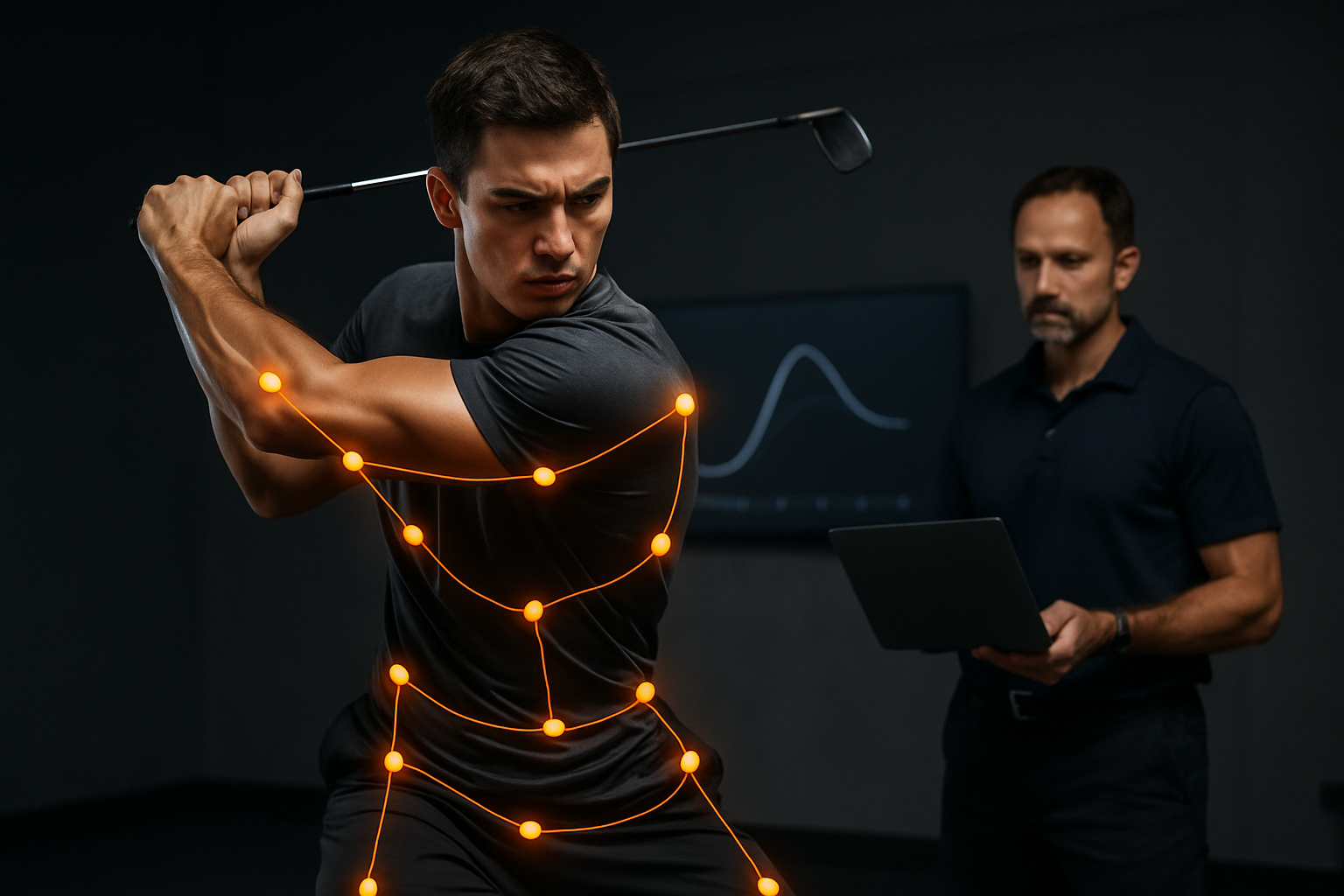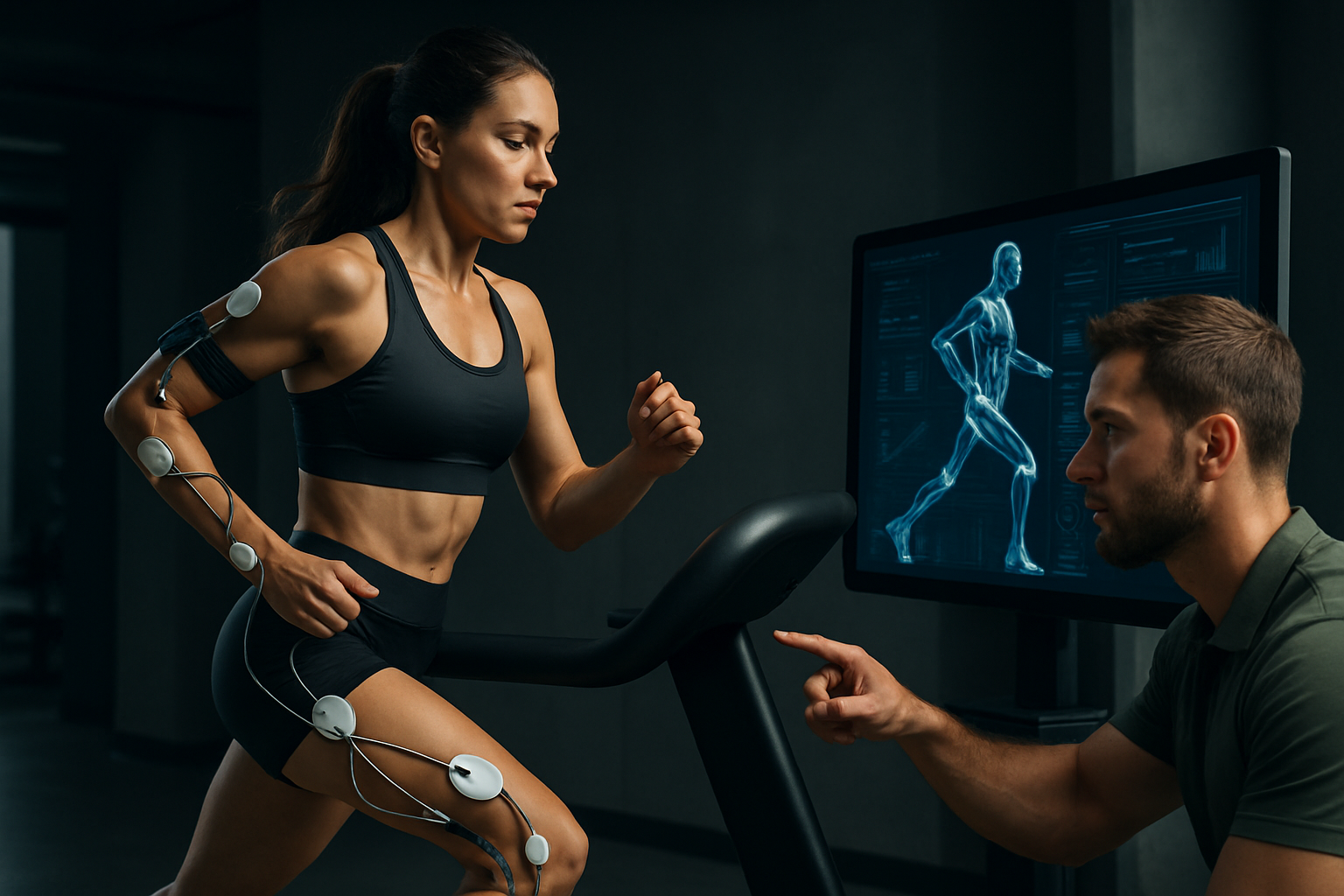Kinematic Sequencing: The Hidden Key to Athletic Mastery
The world of sports performance is constantly evolving, with athletes and coaches seeking new ways to gain a competitive edge. One concept that has gained significant traction in recent years is kinematic sequencing - a fundamental principle that underlies efficient movement patterns across various sports. This article delves into the intricate world of kinematic sequencing, exploring its impact on athletic performance and its potential to revolutionize training methodologies.

The Foundations of Kinematic Sequencing
At its core, kinematic sequencing is based on the principle of energy transfer through the body’s kinetic chain. This concept suggests that power is generated from the ground up, with each body segment contributing to the overall motion in a specific order. The sequence typically begins with the larger, more stable segments of the body (like the legs and hips) and progresses to the smaller, more mobile segments (like the arms and hands).
The importance of this sequence lies in its ability to maximize energy transfer and minimize energy leakage. When executed correctly, kinematic sequencing allows athletes to generate tremendous power while maintaining control and precision. This is achieved through a combination of factors, including:
-
Proper timing of segment activation
-
Optimal joint angles and positions
-
Efficient use of stretch-shortening cycles
-
Coordination of muscular contractions
Research has shown that elite athletes across various sports demonstrate remarkably similar kinematic sequences, despite the apparent differences in their respective disciplines. This suggests that there may be a universal principle at work, one that transcends individual sports and holds the key to unlocking peak athletic performance.
The Science Behind the Sequence
To truly appreciate the impact of kinematic sequencing on athletic performance, it’s essential to understand the underlying biomechanics. When an athlete initiates a movement, they create a kinetic chain - a linked system of body segments working together to produce a desired outcome.
In an optimal kinematic sequence, each segment in the chain reaches its maximum velocity just as the next segment begins to accelerate. This creates a whip-like effect, where energy is transferred efficiently from one segment to the next, culminating in a powerful and precise movement at the end of the chain.
Studies using high-speed motion capture technology have revealed the intricate details of this process. For example, in a golf swing, the sequence typically follows this pattern:
-
Hip rotation
-
Torso rotation
-
Arm movement
-
Wrist uncocking
Each phase builds upon the previous one, with the velocity increasing as the energy moves up the kinetic chain. The result is a highly efficient movement that generates maximum clubhead speed at impact.
Similar patterns have been observed in other sports, such as baseball pitching, tennis serves, and javelin throws. The consistency of these findings across different disciplines underscores the universal importance of kinematic sequencing in athletic performance.
Applications in Training and Skill Development
Understanding kinematic sequencing has profound implications for athletic training and skill development. By focusing on optimizing the sequence of movements, coaches and athletes can potentially improve performance across a wide range of sports.
One of the key benefits of this approach is its emphasis on whole-body coordination rather than isolated muscle groups. Traditional strength training often focuses on developing individual muscles or muscle groups, but kinematic sequencing highlights the importance of how these muscles work together in a coordinated sequence.
This shift in perspective has led to the development of new training methodologies that prioritize movement patterns over isolated exercises. Some examples include:
-
Plyometric exercises that emphasize the stretch-shortening cycle
-
Rotational power training to improve torso sequencing
-
Multi-planar movements that mimic sport-specific actions
-
Timing drills to enhance coordination between body segments
By incorporating these elements into training programs, athletes can develop a more efficient and powerful kinematic sequence, potentially leading to improved performance and reduced risk of injury.
Kinematic Sequencing in Different Sports
While the principles of kinematic sequencing are universal, their application varies across different sports. Let’s explore how this concept manifests in several popular disciplines:
Baseball Pitching
In baseball, the kinematic sequence of a pitch begins with the lower body and progresses through the trunk, shoulder, elbow, and finally the wrist. Studies have shown that pitchers who demonstrate optimal sequencing can generate higher ball velocities with less stress on their arm.
Key elements of an efficient pitching sequence include:
-
Powerful leg drive to initiate the movement
-
Proper timing of trunk rotation
-
Delayed shoulder external rotation
-
Rapid elbow extension and wrist flexion
By focusing on these aspects, pitchers can potentially increase their throwing velocity while reducing the risk of arm injuries.
Golf Swing
The golf swing is often cited as a prime example of kinematic sequencing in action. The sequence typically follows this pattern:
-
Weight shift and hip rotation
-
Torso rotation
-
Arm movement
-
Wrist uncocking
Golfers who master this sequence can generate impressive clubhead speeds with seemingly effortless swings. The key lies in the timing - each segment should reach its peak velocity just as the next segment begins to accelerate.
Tennis Serve
The tennis serve involves a complex kinematic sequence that begins with the lower body and culminates in a powerful racquet impact. The typical sequence includes:
-
Knee extension and hip rotation
-
Trunk rotation and extension
-
Shoulder external rotation
-
Elbow extension and wrist flexion
Elite tennis players demonstrate remarkable consistency in this sequence, allowing them to generate high ball speeds while maintaining accuracy.
Swimming
Even in a sport like swimming, where the body is supported by water, kinematic sequencing plays a crucial role. In the freestyle stroke, for example, the sequence typically follows this pattern:
-
Hip rotation
-
Torso rotation
-
Shoulder flexion and internal rotation
-
Elbow flexion and extension
By optimizing this sequence, swimmers can improve their stroke efficiency and potentially increase their speed in the water.
Challenges and Limitations
While the concept of kinematic sequencing offers exciting possibilities for athletic performance enhancement, it’s important to acknowledge the challenges and limitations associated with its implementation.
One of the primary challenges is the complexity of measuring and analyzing kinematic sequences. Advanced motion capture technology and sophisticated data analysis are often required to accurately assess an athlete’s movement patterns. This can make it difficult for coaches and athletes without access to such resources to fully leverage the principles of kinematic sequencing.
Additionally, the optimal sequence can vary depending on individual factors such as body type, flexibility, and strength. What works for one athlete may not be ideal for another, necessitating a personalized approach to training and skill development.
There’s also the question of how much an athlete’s natural movement patterns can be altered through training. While improvements can certainly be made, completely reshaping an athlete’s kinematic sequence may be challenging and could potentially lead to decreased performance in the short term.
Finally, it’s important to note that kinematic sequencing is just one aspect of athletic performance. Factors such as strength, endurance, mental preparedness, and tactical knowledge all play crucial roles in determining an athlete’s success.
The Future of Kinematic Sequencing in Sports
As our understanding of human biomechanics continues to evolve, so too will our application of kinematic sequencing principles in sports training and performance enhancement. Several exciting developments are on the horizon:
Artificial Intelligence and Machine Learning
The integration of AI and machine learning into sports science is opening up new possibilities for analyzing and optimizing kinematic sequences. These technologies can process vast amounts of data from motion capture systems, identifying patterns and providing insights that might be missed by human observers.
In the future, we may see AI-powered coaching systems that can provide real-time feedback on an athlete’s movement patterns, helping them to optimize their kinematic sequence during practice and competition.
Virtual Reality Training
Virtual reality (VR) technology offers a unique opportunity for athletes to visualize and practice optimal kinematic sequences in a controlled environment. By providing immersive, interactive experiences, VR training could help athletes internalize efficient movement patterns more quickly and effectively than traditional methods.
Wearable Technology
Advances in wearable technology are making it possible to measure kinematic sequences outside of the laboratory setting. Smart clothing embedded with sensors could provide continuous feedback on an athlete’s movement patterns during training and competition, allowing for more precise and personalized coaching interventions.
Genetic Factors and Personalized Training
As our understanding of the genetic factors that influence movement patterns grows, we may be able to develop more personalized approaches to kinematic sequencing training. By identifying an individual’s genetic predispositions, coaches could tailor training programs to maximize each athlete’s natural strengths while addressing potential weaknesses.
Integrating Kinematic Sequencing into Athletic Development
For coaches, trainers, and athletes looking to incorporate kinematic sequencing principles into their training regimens, here are some practical strategies to consider:
1. Movement Analysis
Start by conducting a thorough analysis of the athlete’s current movement patterns. This can be done using video analysis or, if available, more advanced motion capture technology. Look for areas where the kinematic sequence might be suboptimal, such as energy leaks or poor timing between segments.
2. Develop Awareness
Help athletes develop a keen awareness of their body movements. This can be achieved through exercises that focus on proprioception and kinesthetic awareness. Techniques such as slow-motion practice and mirror work can be valuable tools in this process.
3. Progressive Training
Implement a progressive training program that focuses on developing each component of the kinematic sequence. Start with basic movements and gradually increase complexity as the athlete’s skills improve. This might include:
-
Exercises to improve lower body power and stability
-
Rotational core training to enhance torso sequencing
-
Upper body exercises that emphasize the stretch-shortening cycle
-
Sport-specific drills that integrate the full kinematic sequence
4. Feedback and Reinforcement
Provide regular feedback to athletes on their movement patterns. This can be done through video analysis, verbal cues, or tactile feedback. Positive reinforcement when the athlete demonstrates proper sequencing can help ingrain these patterns.
5. Mental Imagery
Encourage athletes to use mental imagery techniques to visualize and internalize optimal kinematic sequences. This can be particularly useful for complex movements that are difficult to practice repeatedly in real-world settings.
6. Holistic Approach
Remember that kinematic sequencing is just one aspect of athletic performance. Integrate this focus with other important elements such as strength training, flexibility work, and sport-specific skill development.
7. Individualization
Recognize that the optimal kinematic sequence may vary slightly from athlete to athlete. Be prepared to adapt your approach based on individual body types, strengths, and limitations.
Conclusion: The Power of Precision in Motion
Kinematic sequencing represents a fascinating frontier in sports science and athletic performance. By understanding and optimizing the intricate dance of body segments involved in athletic movements, we open up new possibilities for enhancing human performance across a wide range of sports.
The principles of kinematic sequencing offer a unifying framework for understanding efficient movement, transcending the boundaries between different sports and disciplines. As our knowledge in this area continues to grow, we can expect to see increasingly sophisticated training methodologies that leverage these principles to push the boundaries of human athletic achievement.
For athletes and coaches alike, embracing the concept of kinematic sequencing offers a pathway to more efficient, powerful, and precise movements. It encourages a holistic view of the body as an interconnected system, where each part plays a crucial role in the overall performance.
As we look to the future, the integration of kinematic sequencing principles with emerging technologies like AI, VR, and advanced wearables promises to revolutionize how we approach athletic training and performance optimization. These developments have the potential to not only enhance elite athletic performance but also to improve movement efficiency and reduce injury risk for athletes at all levels.
Ultimately, the study of kinematic sequencing reminds us of the incredible complexity and beauty of human movement. It challenges us to look beyond the surface-level aspects of athletic performance and delve into the intricate biomechanical processes that underlie every jump, throw, swing, and sprint.
By mastering the art and science of kinematic sequencing, athletes can unlock new levels of performance, pushing the boundaries of what we thought was possible in human athletic achievement. As research in this field continues to advance, we can look forward to a future where athletic movements are executed with unprecedented power, precision, and efficiency - a testament to the remarkable capabilities of the human body when its movements are perfectly orchestrated.





